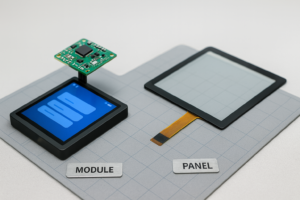In today’s fast-paced digital world, touch screens have become an integral part of our daily lives. From smartphones to industrial machines, touch screens are everywhere. However, with their widespread use, concerns about their safety and durability have also surfaced. In this blog post, we will explore the safety features of touch screens, focusing on their waterproof, dustproof, and drop-resistant capabilities. Understanding these features is essential for consumers and businesses alike, ensuring that they make informed decisions when selecting touch screen devices.
Understanding Touch Screen Safety
When we talk about the safety of touch screens, we refer to their ability to withstand various environmental factors and physical impacts. The most common concerns include exposure to water, dust, and accidental drops. Each of these factors can significantly affect the performance and longevity of a touch screen device. Therefore, manufacturers have developed specific ratings and standards to address these concerns.
1. Waterproofing: The Importance of IP Ratings
Waterproofing is a critical feature for touch screens, especially in environments where spills or exposure to moisture is likely. Manufacturers often use the Ingress Protection (IP) rating system to classify the degree of protection provided against water and dust. The IP rating consists of two digits: the first digit indicates protection against solid objects (like dust), while the second digit indicates protection against liquids.
For instance, an IP67 rating means that the device is completely dust-tight and can withstand immersion in water up to one meter for a limited time. This level of waterproofing is ideal for devices used in outdoor settings or industries such as construction and healthcare, where exposure to liquids is common.
2. Dustproofing: Keeping the Elements Out
Dust can be a significant threat to the functionality of touch screens, especially in industrial environments where dust and debris are prevalent. Just like waterproofing, dustproofing is also measured using the IP rating system. A device with a high IP rating for dust protection, such as IP68, ensures that no dust particles can enter the device, thereby maintaining its performance.
Dust can cause screen malfunctions, hinder touch sensitivity, and even lead to permanent damage over time. Therefore, investing in a dustproof touch screen is essential for maintaining operational efficiency, particularly in manufacturing, warehousing, and outdoor applications.
3. Drop Resistance: Protecting Against Accidental Falls
Accidental drops are one of the leading causes of damage to touch screen devices. Whether it’s a smartphone slipping from a user’s hand or an industrial tablet falling off a workbench, the impact can lead to shattered screens and costly repairs. To address this issue, manufacturers have developed various technologies to enhance drop resistance.
One common approach is the use of reinforced glass, such as Gorilla Glass, which is designed to withstand impacts without shattering. Additionally, many devices are built with ruggedized designs that include shock-absorbing materials to protect the internal components from damage during a fall.
4. Comparing Waterproof, Dustproof, and Drop Resistance
When choosing a touch screen device, it’s essential to consider how these three safety features compare and which is most relevant to your needs.
- Waterproofing is critical for environments where exposure to liquids is a concern. For example, a restaurant may require waterproof touch screens for ordering systems to prevent damage from spills.
- Dustproofing is vital in industrial settings where dust can accumulate and interfere with device functionality. A construction site, for instance, would benefit from dustproof touch screens to ensure reliable performance amidst debris.
- Drop resistance is crucial for mobile devices that are frequently handled and moved. For instance, field technicians using tablets for data entry would require devices that can withstand accidental drops.
Ultimately, the importance of each feature depends on the specific use case. For businesses operating in challenging environments, it may be wise to invest in devices that offer a combination of all three safety features.
5. Making Informed Decisions
When selecting a touch screen device, it is essential to evaluate the IP ratings and drop resistance technologies provided by the manufacturer. Look for detailed specifications and user reviews to gauge the real-world performance of the device. Additionally, consider the warranty and support options offered, as these can provide peace of mind in case of accidental damage.
6. Conclusion
In conclusion, the safety of touch screens is paramount in today’s technology-driven world. Understanding the differences between waterproof, dustproof, and drop-resistant features can help consumers and businesses make informed choices. By investing in high-quality touch screens that provide robust protection against environmental factors and physical impacts, users can ensure the longevity and reliability of their devices.
As we continue to rely on touch screens for various applications, prioritizing safety will ultimately lead to better user experiences and operational efficiency. Whether you are a business owner looking to equip your workplace or an individual selecting a personal device, remember to consider these essential safety features. Protect your investment and enjoy the seamless interaction that touch screens offer, knowing that you have chosen a device built for durability
.png)



